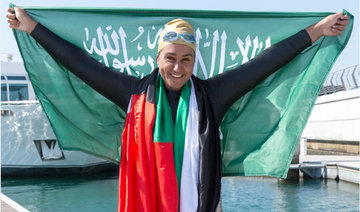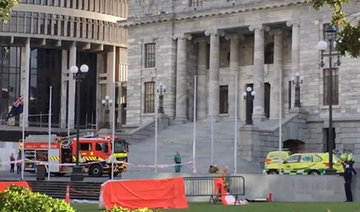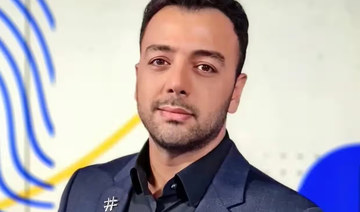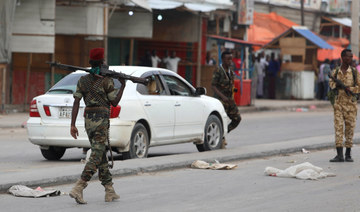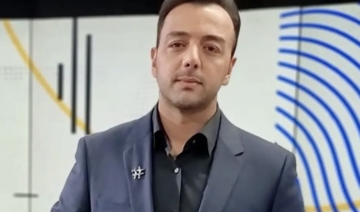JEDDAH: On the eve of leaving for the US to study animation filmmaking at the University of Missouri for a semester, Bushra Al-Andijani’s professor in Saudi Arabia told her she was one of his weakest students and she would not do well in the program.
But Al-Andijani returned as one of the top students of the semester in her American class much to the surprise, and perhaps the chagrin, of her Saudi instructor.
“Since I was a child I had this dream of becoming (a) filmmaker because it is my passion and it is what (I) am good at,” Al-Andijani told Arab News. “Thanks to Effat (University) for providing this department, I am in my hometown studying the major that I like. Of course, if it was not here in Saudi I would travel abroad to study filmmaking.”
Al-Andijani, 21, is a part of the first graduating class of women to earn a bachelor’s degree in Video and Digital Production (VDP) at Effat University this spring. The graduating class is also the first in Saudi Arabia to earn a degree in filmmaking. And for now a filmmaking/video/animation degree is only available to women in Saudi Arabia.
It is a remarkable achievement when just a decade ago aspiring Saudi directors had to perform guerrilla filmmaking to avoid getting caught making movies on public streets or had to leave the country to shoot films in the United Arab Emirates (UAE).
Al-Andijani’s graduating class represents the Saudi government’s efforts to broaden job opportunities for women. The move also provides more entertainment options for the public in an effort to stimulate the economy through the Vision 2030 program implemented by Deputy Crown Prince Mohammed bin Salman.
When Al-Andijani joined the VDP program at Effat University in 2012, she and her fellow students struggled to make videos, dealing with passersby that objected to public filmmaking. At one point members of the Commission for the Promotion of Virtue and the Prevention of Vice (Haia) questioned them as they were filming a scene, but ultimately let them go with a warning.
“We were insulted by people,” she said. “Many of them threw bad words at me and my friend while shooting.”
She said film students cannot shoot without getting an approval from property owners and with a specific time and date.
Mohammad Ghazalah, department chair of VDP, said the students of the graduating class are highly qualified to operate the equipment.
“That is why most of (the) production companies have already asked to hire them,” Ghazalah said, noting that Saudi production companies need more talented and trained video-production teams to handle the complex work.
Effat’s program and the work of experienced independent Saudi filmmakers inside the Kingdom, in the Gulf Cooperation Council (GCC) and even in Hollywood defy the stereotype that Saudis have no passion for movies or animation.
“Despite the absence of cinema as studies there is a large number of people who watch YouTube channels,” Ghazalah said. “They use it as their visual media tool to (critique) their culture and to view who they are. So a dark room and popcorn is not a big deal anymore.”
In contrast, Dubai is the closest major video-production center and the largest production base in the Middle East. Saudi movie directors, writers and producers now have a chance to showcase their works on the big screen.
Yet Gazalah pointed out that it does not take formal film studies in Saudi Arabia for Saudis to produce motion pictures.
“Although this major (in video production) is not available to men here in Saudi Arabia, this will not stop whoever has the passion for filmmaking to study it abroad,” he said. “Similarly, film producers are not limited to produce their films in Saudi Arabia. The movies “Bilal” and “Barakah Meets Barakah” achieved great success and made a profit.”
Al-Andijani is focusing on stop-motion animation and computer-generated imagery (CGI), a process used for generating animated images, such as applied in many movies ranging from “Cars” to “Titanic.” She applied the same concept she learned at the University of Missouri to her own film, “Tita.P.”
She participated in three annual filmmaking festivals: Zumeff Film festival in Abu Dhabi in 2015, the 2016 Youth Film Festival in Jeddah and the Saudi Film Festival. She won the Encouragement Award at the Chitrakatha International Festival in India for animation in 2015 as well as an honor certificate at the Saudi Film Festival earlier this year.
To begin her fledgling career as a filmmaker, Al-Andijani first had to clear some hurdles. She registered at the university as an architecture major, but quickly decided to change to film production. Her parents opposed the move, but she was determined to become a filmmaker.
“When my parents first attended the show and saw how excited I was about my movie they were happy for me and they started to support me,” she said. ‘When I immersed myself in the environment of working, which requires midnight shooting, they were really worried and against the procedure to a certain point. Gradually they started to let go and set me free. I was allowed to travel alone and face the world. My parents do not get the idea but they believe in me and show that they care.”
She already has her career goals set. “I would like to have my career outside the country, as I want to gain some experience and then come back to have my own studio,” she said.
But in addition to her parents’ trepidation about her career choice, she also had to deal with a video-production department that was in its infancy.
“When we first came here to the department (at Effat) it was all empty with no equipment,” she said. “Everything was about theories. After one year all the equipment arrived.”
The department has a virtual-reality laboratory that involves modeling and animation of three-dimensional (3-D) inhabited virtual worlds. Moreover, the lab was provided with all the equipment needed, such as Microsoft HoloLens, the first fully untethered, holographic computer that enables users to interact with high definition holograms in their world.
The department’s animation-computing lab features high-end Macs, running industry-standard applications for 3-D and 2-D animation and DVD and video production.
The interactive lab provides multi-touch technology. The editing lab allows students to edit their videos and provide commentary on scenarios.
Sehaam Ismael, assistant professor in the VDP Department said: “Students here are so creative and passionate of what they are doing. They spend the whole day working on their projects and creating their own characters until 10 p.m. If they have an idea they will not settle until they make it real.”
Al-Andijani said she is focused and has no intention of letting go of her dreams.
“Although life is full of hard times, I do not leave a space for desperation,” she said. “Instead, I do not take no for an answer, I always seek for perfection. Whenever I am working on something I always want my work to be the best.”
Saudi women gaining a foothold in filmmaking
Saudi women gaining a foothold in filmmaking
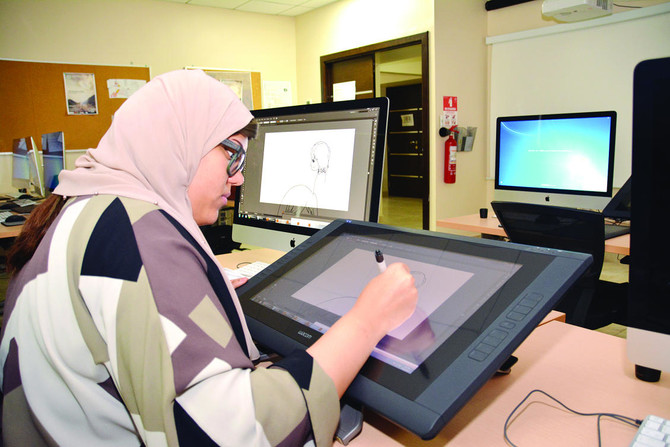
Live video of man who set himself on fire outside court proves challenging for news organizations
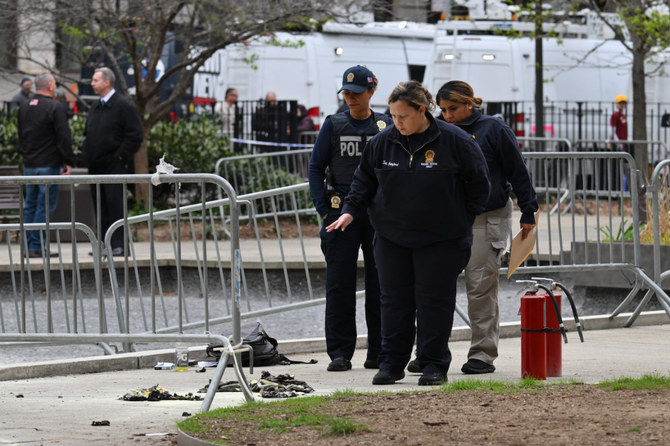
- The man, who distributed pamphlets before dousing himself in an accelerant and setting himself on fire, was in critical condition
- The incident tested how quickly the networks could react, and how they decided what would be too disturbing for their viewers to see
NEW YORK: Video cameras stationed outside the Manhattan courthouse where former President Donald Trump is on trial caught the gruesome scene Friday of a man who lit himself on fire and the aftermath as authorities tried to rescue him.
CNN, Fox News Channel and MSNBC were all on the air with reporters talking about the seating of a jury when the incident happened and other news agencies, including The Associated Press, were livestreaming from outside the courthouse. The man, who distributed pamphlets before dousing himself in an accelerant and setting himself on fire, was in critical condition.
The incident tested how quickly the networks could react, and how they decided what would be too disturbing for their viewers to see.
With narration from Laura Coates, CNN had the most extensive view of the scene. Coates, who at first incorrectly said it was a shooting situation, then narrated as the man was visible onscreen, enveloped in flames.
“You can smell burning flesh,” Coates, an anchor and CNN’s chief legal analyst, said as she stood at the scene with reporter Evan Perez.
The camera switched back and forth between Coates and what was happening in the park. Five minutes after the incident started, CNN posted the onscreen message “Warning: Graphic Content.”
Coates later said she couldn’t “overstate the emotional response of watching a human being engulfed in flames and to watch his body be lifted into a gurney.” She described it as an “emotional and unbelievably disturbing moment here.”
Fox’s cameras caught the scene briefly as reporter Eric Shawn talked, then the network switched to a courtroom sketch of Trump on trial.
“We deeply apologize for what has happened,” Shawn said.
On MSNBC, reporter Yasmin Vossoughian narrated the scene. The network showed smoke in the park, but no picture where the body was visible.
“I could see the outline of his body inside the flames,” Vossoughian said, “which was so terrifying to see. As he went to the ground his knees hit the ground first.”
The AP had a camera with an unnarrated live shot stationed outside the courthouse, shown on YouTube and APNews.com. The cameras caught an extensive view, with the man lighting himself afire and later writhing on the ground before a police officer tried to douse the flames with a jacket.
The AP later removed its live feed from its YouTube channel and replaced it with a new one because of the graphic nature of the content.
The news agency distributed carefully edited clips to its video clients — not showing the moment the man lit himself on fire, for example, said executive producer Tom Williams.
Russian war correspondent for Izvestia killed in Ukraine
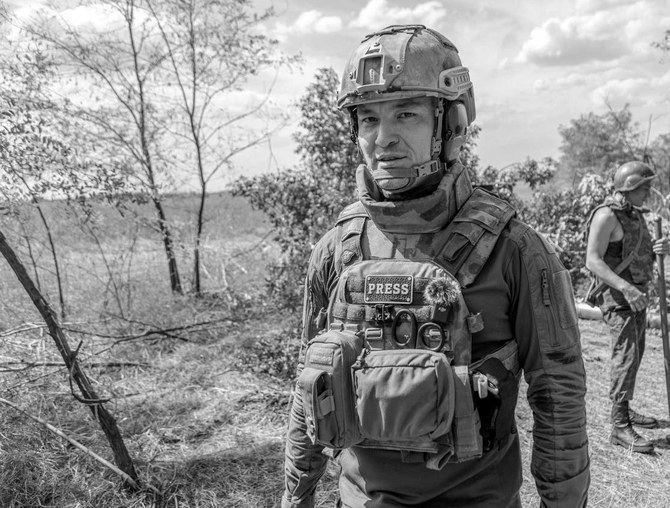
- Izvestia said Semyon Eremin, 42, died of wounds from a drone attack in Zaporizhzhia region
- Eremin had reported for the Russian daily from hottest battles in Ukraine during the 25-month-old war
Semyon Eremin, a war correspondent for the Russian daily Izvestia, was killed on Friday in a drone attack in southeastern Ukraine, the daily said.
Izvestia said Eremin, 42, died of wounds suffered when a drone made a second pass over the area where he was reporting in Zaporizhzhia region.
Izvestia said Eremin had sent reports from many of the hottest battles in Ukraine’s eastern regions during the 25-month-old war, including Mariupol, besieged by Russian troops for nearly three months in 2022.
He had also reported from Maryinka and Vuhledar, towns at the center of many months of heavy fighting.
WhatsApp being used to target Palestinians through Israel’s Lavender AI system
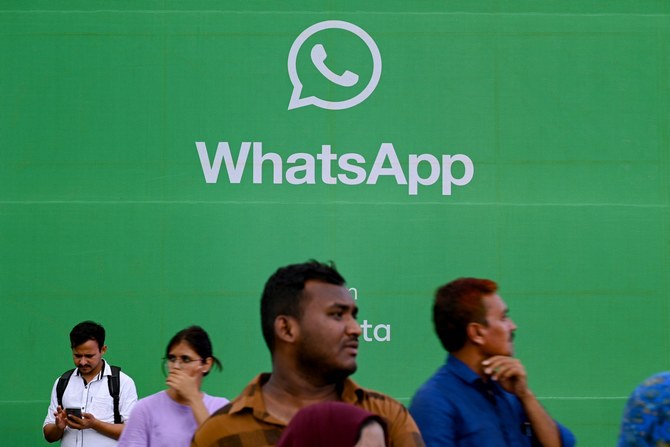
- Targets’ selection based on membership to some WhatsApp groups, new report reveals
- Accusation raises questions about app’s privacy and encryption claims
LONDON: WhatsApp is allegedly being used to target Palestinians through Israel’s contentious artificial intelligence system, Lavender, which has been linked to the deaths of Palestinian civilians in Gaza, recent reports have revealed.
Earlier this month, Israeli-Palestinian publication +972 Magazine and Hebrew-language outlet Local Call published a report by journalist Yuval Abraham, exposing the Israeli army’s use of an AI system capable of identifying targets associated with Hamas or Palestinian Islamic Jihad.
This revelation, corroborated by six Israeli intelligence officers involved in the project, has sparked international outrage, as it suggested Lavender has been used by the military to target and eliminate suspected militants, often resulting in civilian casualties.
In a recent blog post, software engineer and activist Paul Biggar highlighted Lavender’s reliance on WhatsApp.
He pointed out how membership in a WhatsApp group containing a suspected militant can influence Lavender’s identification process, highlighting the pivotal role messaging platforms play in supporting AI targeting systems like Lavender.
“A little-discussed detail in the Lavender AI article is that Israel is killing people based on being in the same WhatsApp group as a suspected militant,” Bigger wrote. “There’s a lot wrong with this.”
He explained that users often find themselves in groups with strangers or acquaintances.
A lot of difficult questions for Meta before that trust can be rebuilt, and I don't honestly believe that Meta can or will answer them pic.twitter.com/vaeLbg9hx3
— Paul Biggar (@paulbiggar) April 16, 2024
Biggar also suggested that WhatsApp’s parent company, Meta, may be complicit, whether knowingly or unknowingly, in these operations.
He accused Meta of potentially violating international humanitarian law and its own commitments to human rights, raising questions about the privacy and encryption claims of WhatsApp’s messaging service.
The revelation is just the latest of Meta’s perceived attempts to silence pro-Palestinian voices.
Since before the beginning of the conflict, the Menlo Park giant has faced accusations of double standards favoring Israel.
In February, the Guardian revealed that Meta was considering the expansion of its hate speech policy to the term “Zionist.”
More recently, Meta quietly introduced a new feature on Instagram that automatically limits users’ exposure to what it deems “political” content, a decision criticized by experts as a means of systematically censoring pro-Palestinian content.
Responding to requests for comment, a WhatsApp spokesperson said that the company could not verify the accuracy of the report but assured that “WhatsApp has no backdoors and does not provide bulk information to any government.”
Eastern European mercenaries suspected of attacking Iranian journalist Pouria Zeraati
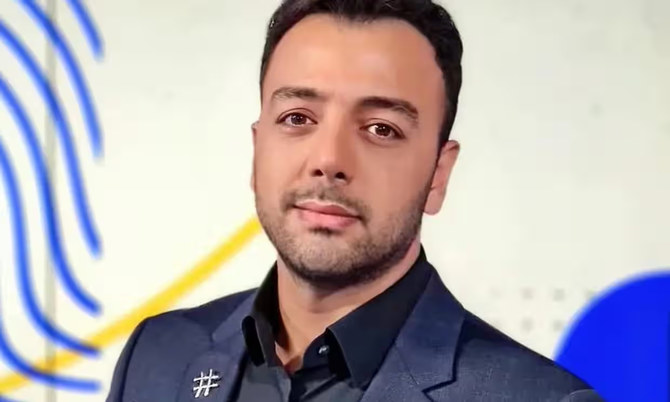
- UK security services believe criminal proxies with links to Tehran carried out London knife attack
LONDON: Police said on Friday that a group of Eastern European mercenaries is suspected to have carried out the knife attack on Iranian journalist Pouria Zeraati in late March.
Zeraati was stabbed repeatedly by three men in an attack outside his south London home.
The Iran International presenter lost a significant amount of blood and was hospitalized for several days. He has since returned to work, but is now living in a secure location.
Iran International and its staff have faced repeated threats, believed to be linked to the Iranian regime, which designated the broadcaster as a terrorist organization for its coverage of the 2022 protests.
Iran’s charge d’affaires, Seyed Mehdi Hosseini Matin, denied any government involvement in the attack on Zeraati.
Investigators revealed that the suspects fled the UK immediately after the incident, with reports suggesting they traveled to Heathrow Airport before boarding commercial flights to different destinations.
Police are pursuing leads in Albania as part of their investigation.
Counterterrorism units and Britain’s security services leading the inquiry believe that the attack is another instance of the Iranian regime employing criminal proxies to target its critics on foreign soil.
This method allows Tehran to maintain plausible deniability and avoids raising suspicions when suspects enter the country.
Zeraati was attacked on March 29 as he left his home home to travel to work. His weekly show serves as a source of impartial and uncensored news for many Iranians at home and abroad.
In an interview with BBC Radio 4’s “Today” program this week, Zeraati said that while he is physically “much better,” mental recovery from the assault “will take time.”
Court orders release of prominent Palestinian professor suspected of incitement
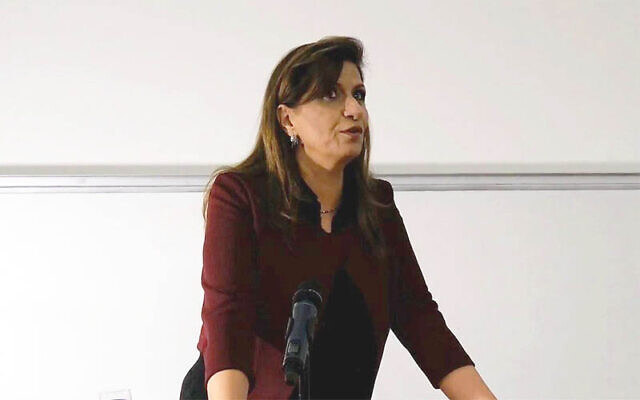
- Nadera Shalhoub-Kevorkian was under investigation after questioning Hamas atrocities, criticizing Israel
- Insufficient justification for arrest, says court
- Detention part of a broader campaign, says lawyer
LONDON: The prominent Hebrew University of Jerusalem professor, Nadera Shalhoub-Kevorkian, was released on Friday after a court order rejected police findings.
The criminologist and law professor was arrested the previous day on suspicion of incitement. She had been under investigation for remarks regarding the Oct. 7 attacks by Hamas and for saying Israelis were committing “genocidal crimes” in the Gaza Strip and should fear the consequences.
On Friday, the court dismissed a police request to extend her remand, citing insufficient justification for the arrest, according to Hebrew media reports.
Protesters gathered outside the courthouse to demonstrate against Shalhoub-Kevorkian’s arrest.
Israeli Channel 12, which first reported the news, did not specify where Shalhoub was arrested but her lawyer later confirmed she was apprehended at her home in the Armenian Quarter of Jerusalem.
“She’s not been in good health recently and was arrested in her home,” Alaa Mahajna said. “Police searched the house and seized her computer and cellphone, [Palestinian] poetry books and work-related papers.”
Mahajna described Shalhoub-Kevorkian’s arrest as part of a broader campaign against her, which has included numerous threats to her life and of violence.
The professor was suspended by her university last month after calling for the abolition of Zionism and suggesting that accounts of sexual assault during the Hamas-led attacks on Israel were fabricated.
The suspension was initially criticized by the university community as a blow to academic freedom in Israel. However, the decision was later reversed following an apology from Shalhoub-Kevorkian and an admission that sexual assaults took place.
Since hostilities began last year, numerous dissenting voices in Israel have faced arrest for expressing solidarity with victims of the bombardment in Gaza.
In October, well-known ultra-Orthodox Israeli journalist Israel Frey was forced into hiding following a violent attack on his home.
Bayan Khateeb, a student at the Technion-Israel Institute of Technology, was arrested last year for incitement after posting an Instagram story showing the preparation of a popular spicy egg dish with the caption: “We will soon be eating the victory shakshuka.”


